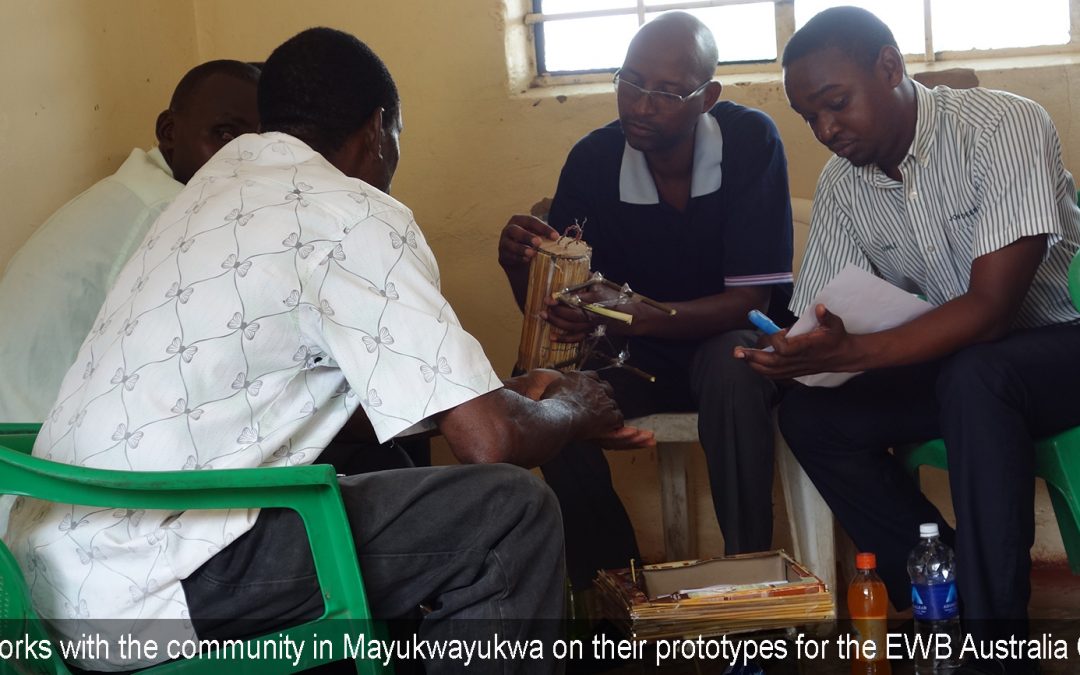Timothy Sakala saw a problem, and he saw a solution. It was the middle he wasn’t so sure about.
As a fairly new Livelihoods Officer with UNHCR’s Zambia operation, Timothy had noticed during the previous 18 months that refugees were having major difficulties finding decent housing. These refugees, most who had fled the Angolan civil war and violence beginning in the 1960s, were waiting on UNHCR for months—even years—to provide iron sheets and a roof they could use to erect housing structures.
Timothy knew it was too long. He also knew that if refugees could figure out how to make use of inexpensive, local materials to construct homes, they’d be more self-reliant and happier with the end result. And they would be spared the long delay that pays no mind to wind or rain.
When Timothy heard a UNHCR broadcast in early 2015 that invited applications to participate in an Engineers Without Borders Challenge, he realized the competition could be the perfect way to figure out how to use local materials to construct homes in Zambia’s refugee settlements. The Challenge would put the minds of 10,000 students from Australia, New Zealand, the UK and Ireland to work on solving refugee issues just like the one he was dealing with.
“We began thinking…why can’t we make use of this opportunity?” Timothy says. “Maybe they can help us to think how we can transform our local materials into what can be dignified structures for refugees from Angola.”
As a Livelihoods Officer, Timothy is constantly helping refugees in Zambia chase opportunity. He has worked with them to help them sustainably boost their incomes, grow food and become self-reliant. To do this, he works with partners from the Zambian Ministries of Agriculture and Community Development to Concern Worldwide and the Czech Republic’s arm of the international nonprofit Caritas.
As Timothy waits for crops to grow his work may seem slow going, but it is quite pressing; finances for the Zambian operation are decreasing 20 percent each year. With diminishing support provided by UNHCR to refugees in Zambia, Timothy has to make sure they can soon stand on their own.
“We are kind of winding them [down] from that support system which they have been used to, to(ward) self-reliance,” Timothy says. “I play a role in helping them all to scheme out how these things can be done, how the next following year can look like, what works well and what doesn’t work well, how can we improve it, what should we add, what should we not add.”
Timothy has already helped these refugees achieve great success in securing a more reliable yearly crop—incredibly important in an area where food routinely runs out well before the next harvest. He’s seen the way using local materials in a conservation farming approach has cut farmers’ costs for inputs and maximized their outputs. Instead of using up the soil’s fertility and moving to new ground, the approach involves nourishing the land with a rotation of crops and organic fertilizers that don’t cut into profits.
“This has been to me one of the most successful projects because it has really helped our beneficiaries to actually increase food at the household level,” Timothy says. “And what accounts for this difference is the new approach to farming systems.”
The change in farming methods Timothy advocated for required changing refugees’ mindsets—something he says was tougher than getting the tools or applying the methods themselves. So as Timothy turns his attention to solving the housing problem with local materials, he is asking one big question: “Are people willing to change?”
Timothy thinks the answer is yes. He saw refugees change their farming methods, and noticed they seemed responsive during a workshop that demonstrated how to construct beehives with local materials like maize stalks and grasses.
His application to make UNHCR’s Zambia operation part of the Engineers Without Borders Challenge was accepted, and initial prototypes of quick-impact projects are now underway in the Mayukwayukwa settlement.
So with the added brainpower of 10,000 students all converging on helping refugees solve their housing and other problems, Timothy is confident that the Challenge will help them find the best way to make using local materials a sustainable housing solution.

